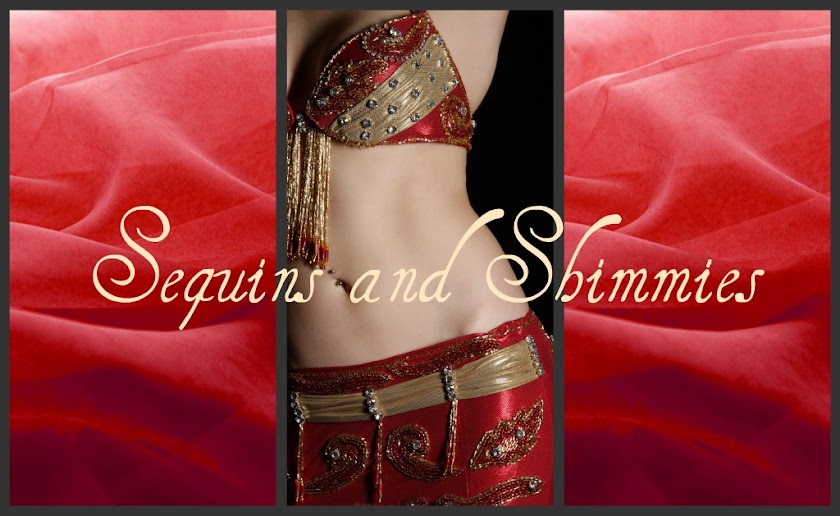What is the right way to belly dance? This question has been swimming around in my head lately, as within the belly dance community there seem to be some fairly opinionated thoughts on this topic. I really got to thinking about this topic after reading a recent article written by Leila Farid of Cairo on Gilded Serpent in which she critiques Ukrainian dancer Alla Kushnir against the Egyptian dancers Tahia Karaoka and Dina, essentially stating that Alla Kushnir's dance is too technique and movement based, while lacking in emotional depth and subtlety. (Before moving on, I would like to clarify so that I'm not putting words into the author's mouth that weren't said: Farid never uses the words "right" and "wrong" in her article or any variation of them, and ultimately the message of her article that I walked away with was to promote cultural awareness. But I did see her article setting the stage for this type of discussion, which it certainly did across various belly dance forums and news feeds after it was published. Therefore this post does not represent some type of response or counter-argument to Farid's article, but rather a progression of thought.)
I have to be honest, when I first entered this art form, I never imagined that there would be so many "rules". Rules about how to interpret the music, what to wear, how to represent culture, how to put together your performance set, and so on. And yes, at least initially, I agree that knowing and studying the "rules" including cultural context, especially for a dancer presenting herself as a professional, is a requirement. Heck, I even posted my own set of "rules" quite recently on when, in my personal opinion, a dancer is qualified to be a professional. So I'm not proposing some type of dance anarchy.
But when does it all become too much? When does appreciating culture and history turn into just drawing an arbitrary line in the sand? When does following the rules start inhibiting creative expression and personal authenticity?
Coming back to the examples that Farid used in her article, to me when I watch the videos, the main thing I see is that they are different. I don't see that any of the three performances are inherently better or worse. Or that one style stands out as the "right", "correct", or "better" way to belly dance. I think each dancer is representative of her own style, including the time period and cultural background that she is dancing in. Watching the three videos, you can definitely see an evolution of style. In a global context, performance art in general has moved toward a more flashy, in-your-face and frequently trick-based focus. You may personally like it or dislike it, but I don't think it's either right or wrong, because art can't be put into boxes of right or wrong. Art just is. You can personally feel drawn to it, repelled by it, or feel neutrally. But that still doesn't make it right or wrong. To me, all art, including dance, exists on a different plane where this type of black and white judgment isn't relevant.
Putting the comparison of Karoaka to Kushir into an American cultural context, I think it's like comparing the talents of Fred Astaire and Ginger Rogers to the professional dancers on Dancing With the Stars. Astaire and Rogers are smooth and classy. When I watch them, I can feel myself sink down into their performance, comforted and wrapped up in it. They are timeless. Watching the pros on Dancing with the Stars, I am drawn in by their athleticism and power. It's sexy and fast-paced, bringing me to the edge of my seat. I like both styles. I can appreciate both styles. And I think there's room for both in the dance world. I don't look at one set and think that their style and their interpretation is incorrect. All art, dance or otherwise, evolves and changes to represent the time period and the location it's being created in, belly dance in Egypt being no exception.
But rather than criticizing evolution or differences, I believe there can be great merit to adaption. And in terms of developing a personal style, I believe it should absolutely be embraced, because ultimately that's the purpose of art: to enjoy a personal and meaningful communication with others. Isn't that why we create to begin with? To sacredly surrender a portion of ourselves to our fellow human beings? Thus I think the only "wrong" way to dance is to dance in-authentically to yourself. There's no point in trying to be a copy of someone else, of trying to replicate someones dance in exactly the same manner and fashion. Each dancer will have her own strengths and weaknesses, and her own cultural and physical background that she brings to the table with her. While it's important to understand the history of the dance, each dancer needs to also look forward and honor her own journey through it. I believe that once a dancer knows what the "rules" are, the dancer can make the informed decision to break them if she so desires. Yes, it might mean that some people will dislike her performance. It might mean that her performance is not traditional or "authentic", but as long as she's not representing it as such (or hired for such), why does it matter? I think the great Martha Graham summed it all up when she said, "You are unique, and if that is not fulfilled, then something is lost."
Photo Credit: Unknown


No comments:
Post a Comment